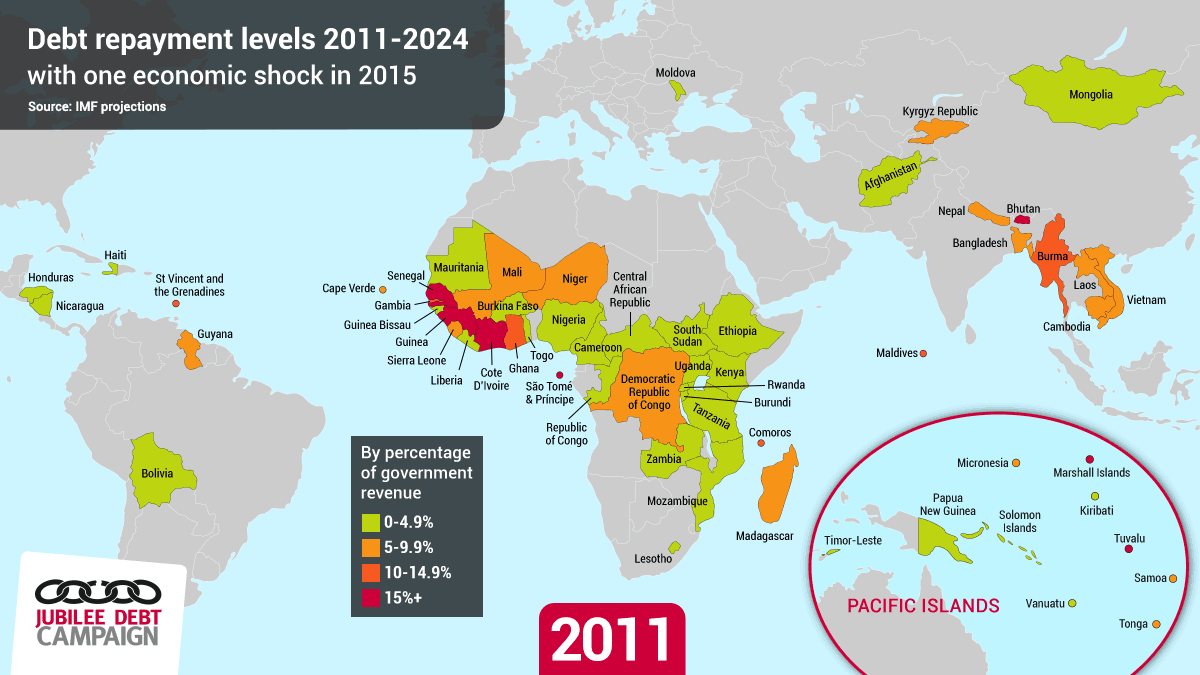Commenting on the increase in US Federal Reserve interest rate, Sarah-Jayne Clifton, Director of the Jubilee Debt Campaign said:
“The debt problems of many developing countries will worsen as this increase in interest rates will further weaken exchange rates and push up debt payments. Many countries are already suffering from a fall in prices for their commodity exports. The reckless boom in lending since 2008 could now be turning to bust.
“Some of the most impoverished countries in the world, such as Mozambique, Zambia and Ghana, are already seeing their debt payments soar. Despite the previous Third World Debt crisis of the 1980s and 1990s and the Eurozone debt crisis, the world still has no way of resolving government debt crises and making reckless lenders share in the costs of loans when they go wrong.”
Between 2007 and 2013, loans to low income countries tripled due to more ‘aid’ being given as loans through multilateral institutions, new lenders such as China, and an increase in private lending due to low interest rates in the US, EU and Japan. Of these loans:
- 60% were from multilateral institutions (including half from the World Bank)
- 30% from foreign governments
- 10% from the private sector
The IMF now says Ghana will be spending 34% of government revenue on foreign debt payments in 2015, and is at high risk of not being able to pay, after its currency the Cedi has fallen 40% against the dollar since the start of 2014. Yet in 2011, the IMF was encouraging lending to Ghana, saying foreign debt payments would be just 5.1% of government revenue in 2015, with a moderate risk of the government not being able to pay.
The IMF also encouraged lending to Zambia, saying in 2012 that the country was at low risk of not being able to pay its debts, and that foreign debt payments would peak at 3.5% of government revenue in 2016. The IMF now says Zambia is at moderate risk of not being able to pay debts, and that government foreign debt payments will reach 10.4% of government revenue in 2016. The Zambian Kwacha has fallen 50% against the dollar since the start of 2014.
The Third World Debt crisis of the 1980s and 1990s began when commodity prices fell and US interest rates increased. It led to two lost decades of development, where economies stagnated and poverty increased. In sub-Saharan Africa in the 1980s and 1990s, economies shrank by 19% per person, whilst the number of people living on less than $1.25 a day increased from 205 million to 330 million.
